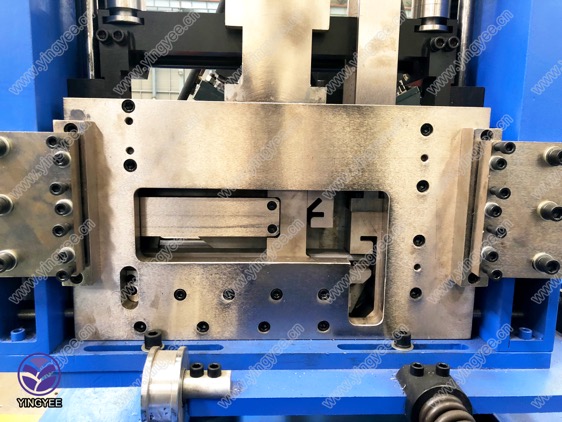
Seam Lock Roll Forming Machine Revolutionizing Metal Fabrication
In the rapidly evolving world of manufacturing, the seam lock roll forming machine has emerged as a pivotal technology for producing high-quality metal components with precision and efficiency. This sophisticated piece of machinery is designed to transform flat metal sheets into complex shapes while creating interlocking seams that enhance structural integrity. This article delves into the operational principles, benefits, applications, and future trends associated with seam lock roll forming technology.
Understanding Seam Lock Roll Forming Machines
Seam lock roll forming machines utilize a series of rollers to gradually shape metal strips into desired profiles. The process begins with feeding a continuous strip of metal, typically steel or aluminum, into the machine. As the metal passes through a sequence of rollers, it is incrementally bent and shaped into a specific cross-sectional profile. The unique aspect of seam lock technology lies in its ability to create interlocking seams during this processing phase, which helps in solidifying the overall construction of the finished product.
Key Benefits of Seam Lock Roll Forming Machines
1. High Efficiency One of the primary advantages of seam lock roll forming machines is their ability to produce components at a significantly higher speed compared to traditional methods. The continuous nature of the process allows for uninterrupted production runs, which minimizes material waste and maximizes output.
2. Consistency and Precision The automated nature of roll forming ensures that each piece produced is consistent in dimension and quality. This is particularly important in industries where specifications are strict, such as construction and automotive manufacturing.
3. Versatility Seam lock roll forming machines can accommodate various materials and thicknesses, making them suitable for diverse applications. The ability to switch profiles quickly enhances their versatility, allowing manufacturers to meet changing market demands effectively.
4. Strength and Durability The interlocking seams produced by these machines offer superior strength and durability compared to traditional welding methods. This feature is crucial in applications that require the end products to withstand significant stress and environmental conditions.
Applications Across Industries

Seam lock roll forming machines find applications across several industries
- Construction In the construction sector, they are used to produce roofing panels, gutter systems, and structural components. The strength of the seam lock technology ensures longevity and reliability in building materials.
- Automotive The automotive industry benefits from this technology by producing parts such as support brackets, body panels, and frames. The reduced weight and increased strength of the components contribute to better fuel efficiency and performance.
- HVAC Heating, ventilation, and air conditioning systems require ductwork that necessitates precision and durability. Roll forming machines provide the perfect solution for creating custom ducts with seamless interlocks.
Future Trends
As technology continues to advance, the seam lock roll forming machine is set to evolve further. Innovations such as automation and integration with Industry 4.0 technologies, including IoT and AI, promise to enhance operational efficiency. Machine learning algorithms could optimize the forming process, predict maintenance needs, and minimize downtime.
Moreover, as the demand for sustainable manufacturing grows, manufacturers are likely to focus on eco-friendly materials and processes, utilizing seam lock roll forming as a means to produce lighter and more energy-efficient products.
Conclusion
The seam lock roll forming machine stands at the forefront of modern metal fabrication, offering unparalleled efficiency, precision, and versatility. Its applications across various industries underscore its importance in meeting the demands of today’s manufacturing landscape. As we look to the future, advancements in technology will undoubtedly further enhance the capabilities of these machines, solidifying their role as indispensable tools in the pursuit of innovation and quality in metal production.